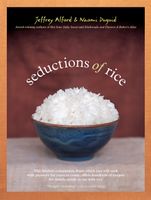Label
All
0
Clear all filters
Cleaning and Soaking
Appears in
By Jeffrey Alford and Naomi Duguid
Published 1998
Traditionally rice, like beans, had to be picked over to check for and discard stones and pebbles. But modern-day commercial rices have usually been well cleaned and sorted before being bagged and shipped, so there’s rarely any need for a preliminary check of the rice. To make sure, if you are using a rice that is new to you, place some in a sieve and look at it closely. It should (and usually will) be of even quality, with no stones or other foreign particles.
The second traditional step is to wash the rice thoroughly in several changes of cold running water. Originally, this ensured that any dirt or dust from the threshing floor or impurities from storage would be washed away. Again, with modern cleaning and storage, these reasons may not apply. But preliminary washing also wets the rice and washes off any loose starch prior to cooking. We think it makes a positive difference in the texture of the cooked rice, making it less sticky and helping it cook more evenly. It is also true that after years of washing rice and watching people in Asia wash rice before cooking, we somehow don’t feel comfortable cooking unwashed rice.
Become a Premium Member to access this page
Unlimited, ad-free access to hundreds of the world’s best cookbooks
Over 160,000 recipes with thousands more added every month
Recommended by leading chefs and food writers
Powerful search filters to match your tastes
Create collections and add reviews or private notes to any recipe
Swipe to browse each cookbook from cover-to-cover
Manage your subscription via the My Membership page
Best value
Part of
Advertisement
Advertisement
The licensor does not allow printing of this title


